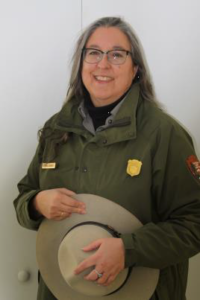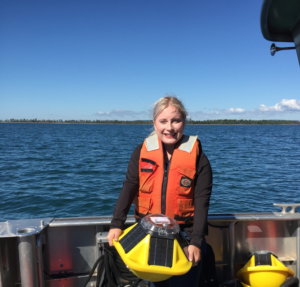Providing access for all to a national lakeshore
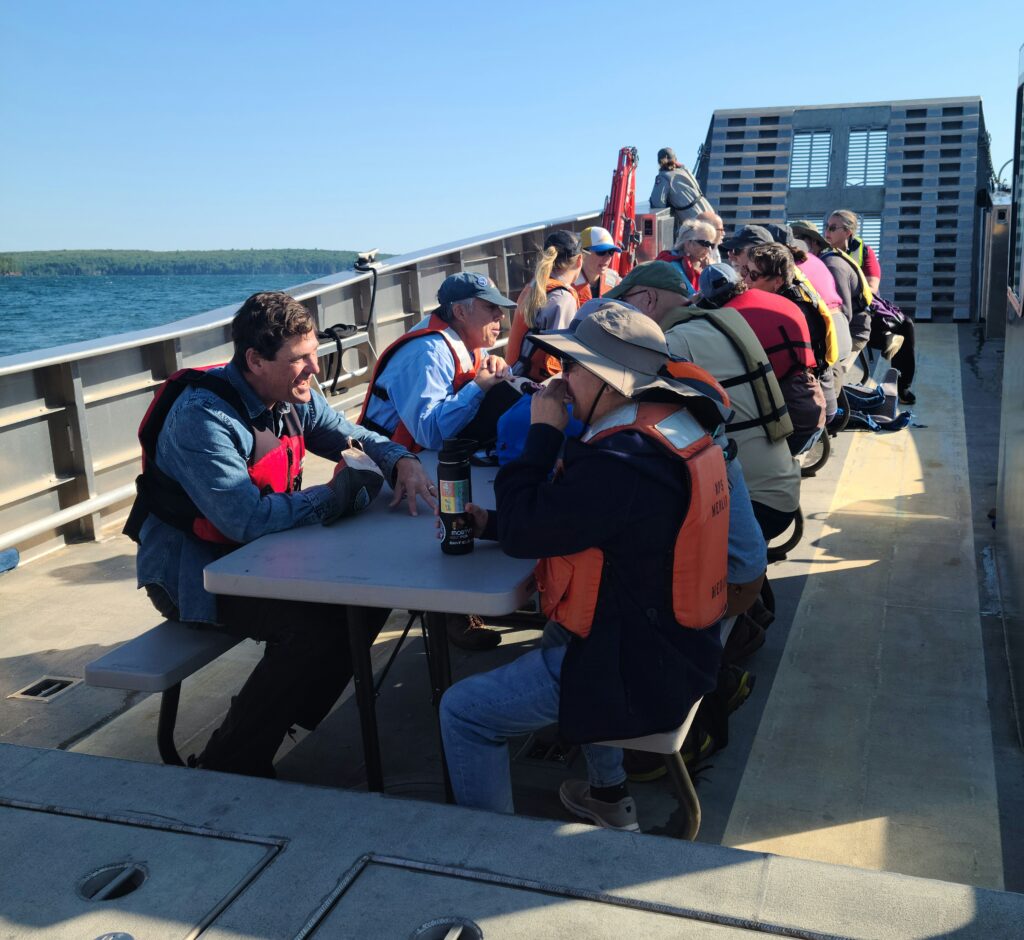
Stockton Island accessibility tour-goers head toward the island in the park service boat, the Phoenix. Image credit: Marie Zhuikov, Wisconsin Sea Grant
Natalie Chin, Wisconsin Sea Grant’s climate and tourism outreach specialist in Superior, Wisconsin, first heard about the “Access for All” campaign by the Friends of the Apostle Islands (Friends) last year. Her personal and professional interests in the accessibility of coastal spaces spurred her to make a personal donation to the project.
This year, she heard a presentation on the campaign while at a conference. The campaign seeks funding for projects to make the Apostle Islands National Lakeshore in Lake Superior more accessible. Afterward, Chin used Sea Grant funds to support a series of four trips that the Friends organized this summer to allow people to see progress the National Park Service has made and other accessibility projects that are in the works in the park.
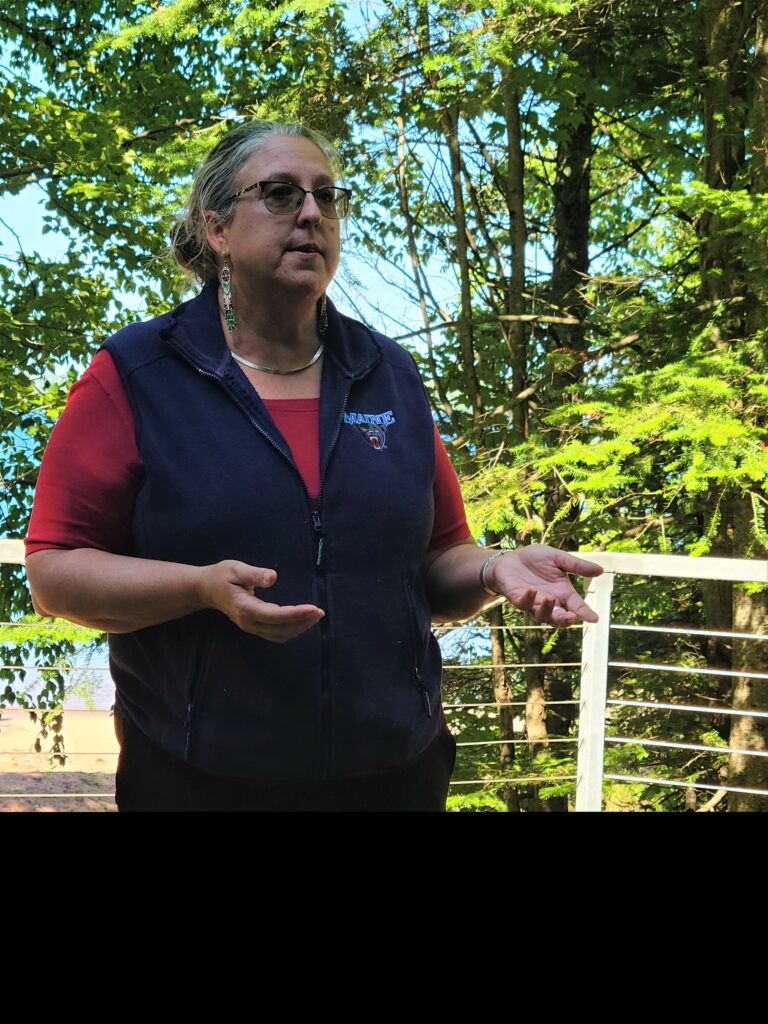
Lynne Dominy, superintendent of the Apostle Islands National Lakeshore. Image credit: Marie Zhuikov, Wisconsin Sea Grant
Chin said there are, “So many connections to coastal tourism, diversity, equity and inclusion and accessibility. Also, I try to support efforts throughout the geographic coverage that our field office has – the four northern Wisconsin counties.”
Chin was invited to attend one of the Access for All tours last month. Before boarding the Phoenix, the park service boat that would take tour-goers to Stockton Island, Lynne Dominy, park superintendent, and Jeff Rennicke, executive director of the Friends, provided a short orientation.
“This park has been here for over 50 years,” Dominy said. “It has a lot of outdated infrastructure as do many of the national parks across the whole nation, and we’re working on them one step at a time.”
Accessible outdoor privies are among the projects recently completed in the park. On Stockton Island, the group planned to visit the accessible amphitheater, which is used for the park’s popular evening ranger talks, and an accessible campsite.
Other projects in the works include a boardwalk to the lighthouse on Sand Island and a ramp to replace 45 steep stairs that lead down to Meyers Beach, a busy entry point for kayakers who want to visit the park’s mainland sea caves.
In a Wisconsin Public Radio interview, Rennicke explained that, “National parks do really belong to all of us. That has to include the one in five Americans who face mobility challenges every day. That’s 61 million people. And if you add to that the millions more who experience vision or hearing or even cognitive challenges, it quickly becomes clear that for many people, obstacles in national parks can be the difference between the trip of a lifetime and being left behind.”
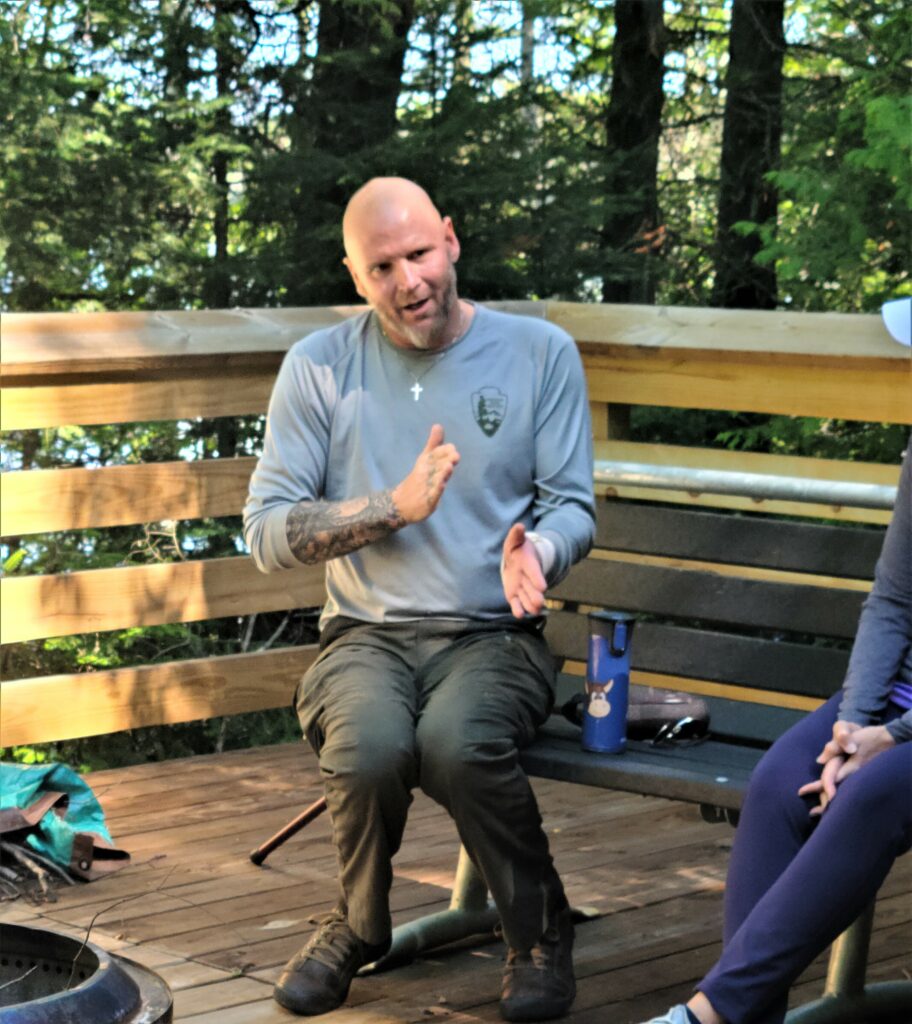
Tommy Richardson, accessibility coordinator for the park, discusses construction of the accessible amphitheater on Stockton Island. Image credit: Marie Zhuikov, Wisconsin Sea Grant
Rennicke set the charge for the tour. “Look with your eyes, have a great time, but don’t forget to look with your heart at how we can help other people enjoy this as well. That’s what our Access for All program is all about.”
After crossing 13 miles of Lake Superior to Stockton Island, the group assembled at the renovated amphitheater. Park staff explained the former structure had basically been a muddy mess, and that it was impossible for a person in a wheelchair to negotiate the slope.
Tommy Richardson, marine and grounds supervisor and accessibility coordinator for the Apostle Islands National Lakeshore, said that before the accessibility initiative, “We didn’t do much around here except mow the lawn.”
Not so now. Richardson and his eight-man crew ferried supplies for the amphitheater via three or four boat trips and hand carried them to the site on the hillside during renovation. After three weeks of work they had a new structure, which featured a ramp and a tiered deck with benches. A round metal firepit sits on a metal grate on the boardwalk at the front of the amphitheater.
The fire pit was Richardson’s brainchild. He said designing one that could be used safely on a boardwalk was challenging. “If you Google it, not a lot comes up.”
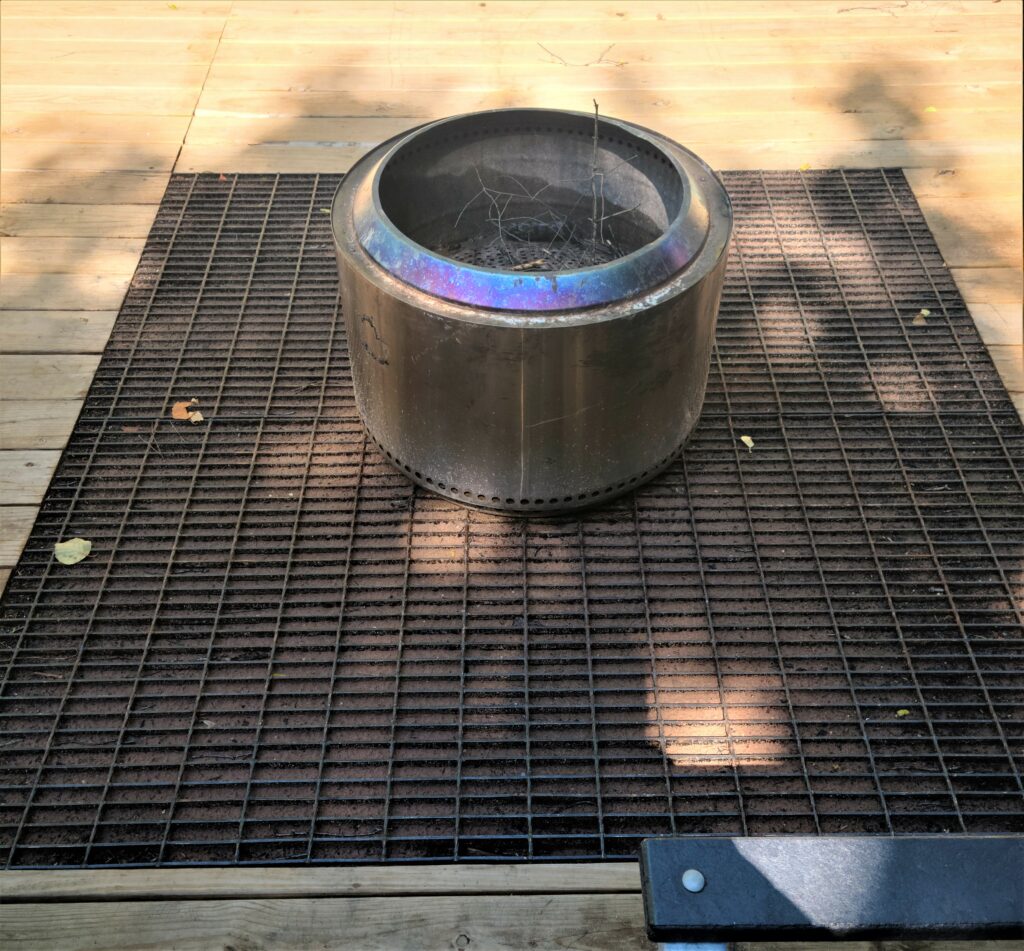
The fire pit on the accessible amphitheater boardwalk. Image credit: Marie Zhuikov, Wisconsin Sea Grant
He gained ideas from consulting with other accessibility coordinators and visiting other accessible outdoors sites in the area. His same firepit design is now used at the three accessible campsites on the island.
Rennicke relayed what the accessible facilities mean to visitors. He said a park ranger was approached after the ribbon-cutting ceremony for the amphitheater in 2022. “One of the visitors that day was from a sailboat. With tears in her eyes, she expressed her gratitude for the amphitheater. Her husband had been hit by a car two years earlier and permanently disabled. As his primary caregiver, this was her first trip out with him to do something they had always done together.”
After a short walk down a boardwalk to Campsite #1, the group was able to see more of Richardson’s ingenuity. The accessible campsite featured a square wooden platform with a fire pit.
“How many of you have ever pounded in a tent stake with a rock?” Rennicke asked. “That’s part of camping. So, if you’re going to camp on a platform, Tommy and his crew said, well, you’ve got to have that experience of putting the stakes in. You don’t want people pounding stakes into your boards, right?”

The box of docking rings, which are used to secure tents to the campsite platforms. Image credit: Marie Zhuikov, Wisconsin Sea Grant
Richardson took a round metal ring out of a wooden box on the railing that surrounds the platform. “They’re docking rings,” he said. “They’re used a lot in Minnesota. They go between the dock boards and you turn them, and they’ll just hold tight.” The rings are available to campers to secure their tents to the wooden platform.
Dominy explained that the park’s accessibility efforts are spreading to the rest of the community and within the park service. “This is how you create change – to show people that it’s possible. Then everybody wants to be a part of it because people want Bayfield to be accessible. . . We set a really high bar and we expect everyone to come on board with us.”
After time to walk the trails and beaches on the island, the group headed back to the mainland on the Phoenix. Chin was impressed by the projects she toured. “It’s obvious that there’s a lot of thought and passion that’s gone into the work, and it was really cool to see it personally. . . We’re trying to help increase access to coastal spaces so that people can come to the lakeshore, learn about the Great Lakes and experience it for themselves. Supporting efforts like these falls within our mission of outreach and education, and also promoting the sustainable use of the Great Lakes, as well.”
To learn more about the Access for All campaign, visit their website.
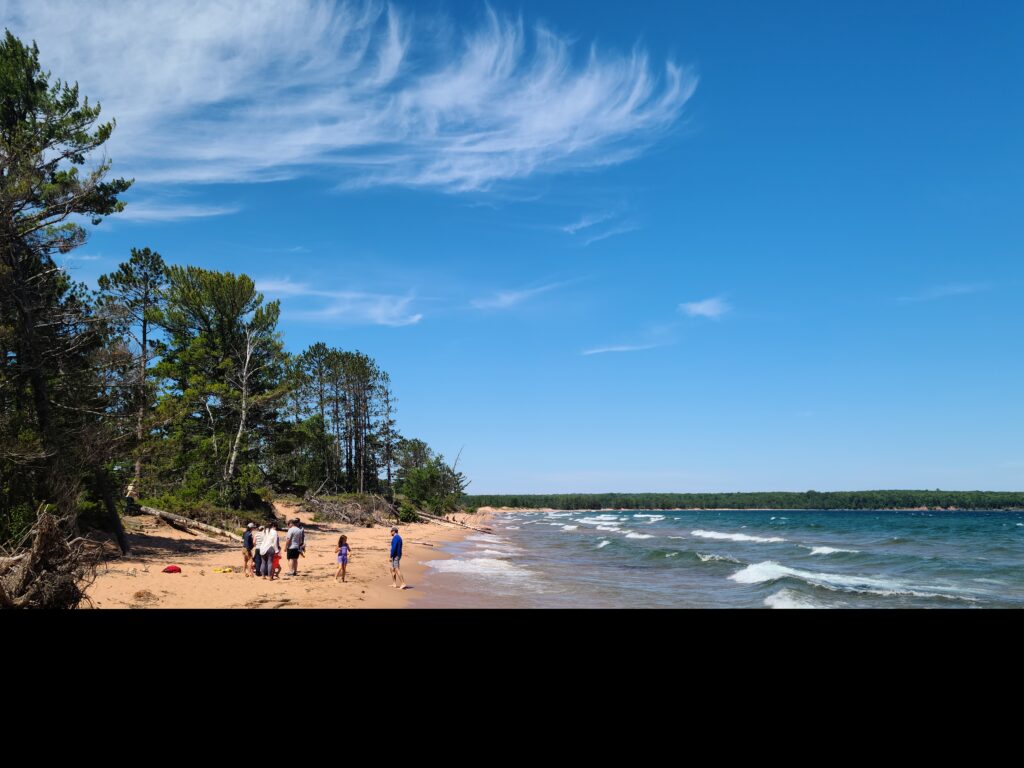
Visitors enjoy Julian Bay on Stockton Island, Apostle Islands National Lakeshore. Image credit: Marie Zhuikov, Wisconsin Sea Grant
News Releases | Wisconsin Sea Grant
News Releases | Wisconsin Sea Grant
https://www.seagrant.wisc.edu/news/providing-access-for-all-to-a-national-lakeshore/

